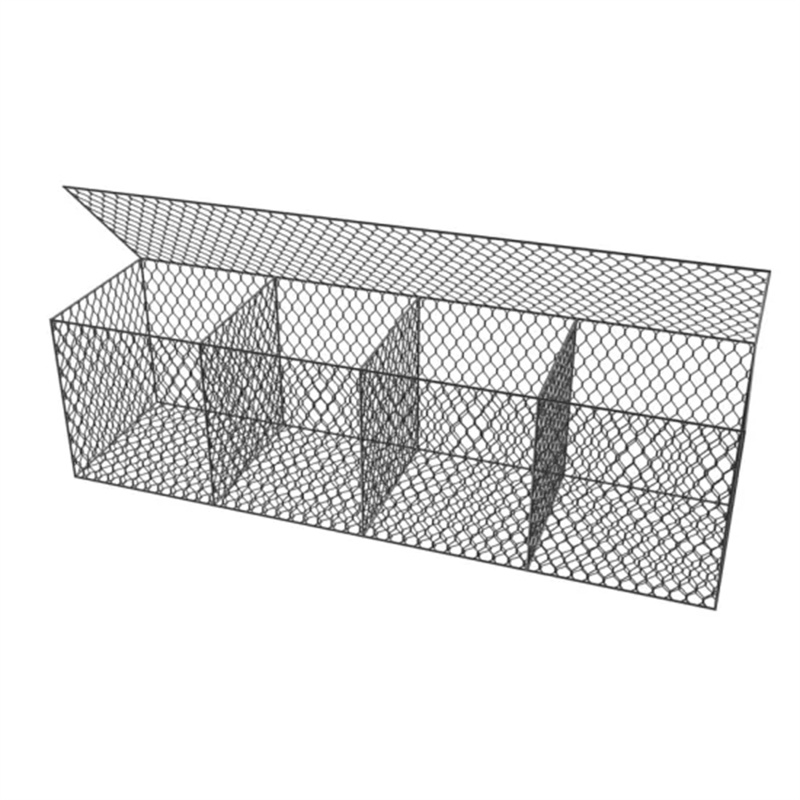nov . 21, 2024 07:50 Back to list
gabion wire mesh
The Versatility and Benefits of Gabion Wire Mesh
Gabion wire mesh has emerged as a crucial component in modern engineering, architecture, and landscaping projects. Its unique characteristics, versatility, and practicality make it a preferred choice for various applications ranging from soil erosion control to aesthetic landscaping features. This article discusses the fundamental aspects of gabion wire mesh, its applications, benefits, and future prospects.
What is Gabion Wire Mesh?
Gabion wire mesh refers to a type of wire used to produce gabions—cages or baskets made of wire mesh that are traditionally filled with rocks, stones, or other materials for construction or landscaping purposes. The primary function of gabion wire mesh is to provide structure and integrity to these enclosures, ensuring that the contents remain securely in place. The wire mesh is typically galvanized or coated for corrosion resistance, allowing it to withstand harsh environmental conditions over time.
Applications of Gabion Wire Mesh
Gabion wire mesh is used in various applications across different fields
1. Erosion Control One of the most significant uses of gabion wire mesh is in controlling soil erosion. By holding together layers of rocks or soil, gabions prevent the washing away of earth in areas that experience heavy rain or rapid water flow. They are often placed along riverbanks, slopes, and hillsides to stabilize the soil.
2. Retaining Walls Gabion walls are a popular choice for retaining unstable soil. They provide support for slopes and can manage water drainage, making them effective in preventing landslides. Their flexibility allows them to adapt to the shifting ground without cracking or collapsing.
3. Flood Defense In flood-prone regions, gabion wire mesh structures can act as barriers, absorbing and redirecting water flow. They are environmentally friendly options for flood control as they blend seamlessly into the natural landscape.
4. Noise Barriers Gabions filled with stones or other materials can absorb sound, making them excellent components for noise barriers along highways, railways, or in urban areas.
5. Architectural Features Beyond their practical uses, gabion wire mesh is increasingly used for aesthetic purposes in landscaping and architecture. Gabions can be used as decorative walls, planters, or even artwork installations, adding a rugged and natural appeal to outdoor spaces.
gabion wire mesh

Benefits of Gabion Wire Mesh
The use of gabion wire mesh offers several advantages
- Durability Gabion wire structures are highly durable and can last for many years, even in challenging weather conditions. The galvanized coating provides additional protection against rust and corrosion.
- Flexibility The design of gabions allows them to expand or contract under pressure, making them more resilient to shifting soils and other environmental factors.
- Cost-Effective Compared to traditional building materials, gabion wire mesh is often more affordable. The local availability of stones or other filling materials contributes to reduced transportation costs and construction expenses.
- Sustainability Gabions are environmentally friendly solutions that utilize natural materials for construction. They allow for vegetation to grow, promoting biodiversity and helping to integrate structures into the landscape.
- Ease of Installation Gabion wire mesh systems are relatively easy to install. Once the frames are set in place, they can be filled with locally sourced stones or gravel, eliminating the need for specialized labor or equipment.
Future Prospects
As environmental awareness grows and the need for sustainable construction practices becomes increasingly important, the demand for gabion wire mesh is expected to rise. Innovative designs and manufacturing processes continue to emerge, improving the functionality and aesthetics of gabion structures.
Architects and engineers are exploring new applications for gabion wire mesh, such as its use in green infrastructure initiatives. The ability to integrate vegetation into gabion designs presents new opportunities for enhancing urban landscapes while addressing environmental challenges like stormwater management and carbon sequestration.
In conclusion, gabion wire mesh is a versatile and effective solution for many engineering, landscaping, and architectural challenges. Its durability, cost-effectiveness, and ecological benefits make it a standout choice in today’s construction industry. As innovation continues to drive the development of gabion technologies, the future looks promising for this practical yet aesthetically pleasing material.
-
The Role of Galvanized Gabion Mesh in Riverbank Protection
NewsJun.26,2025
-
The Role of Gabion Basket Raised Bed in Sustainable Gardening
NewsJun.26,2025
-
Quality Assurance of Wire Mesh Gabion Baskets
NewsJun.26,2025
-
Installation Guide for Welded Gabion Box
NewsJun.26,2025
-
How to Choose the Right Gabion Box
NewsJun.26,2025
-
Different Types of Gabion Wire Mesh
NewsJun.26,2025
-
Why PVC Coated Gabion Mattress Is the Best Solution for Long-Term Erosion Control
NewsMay.23,2025






